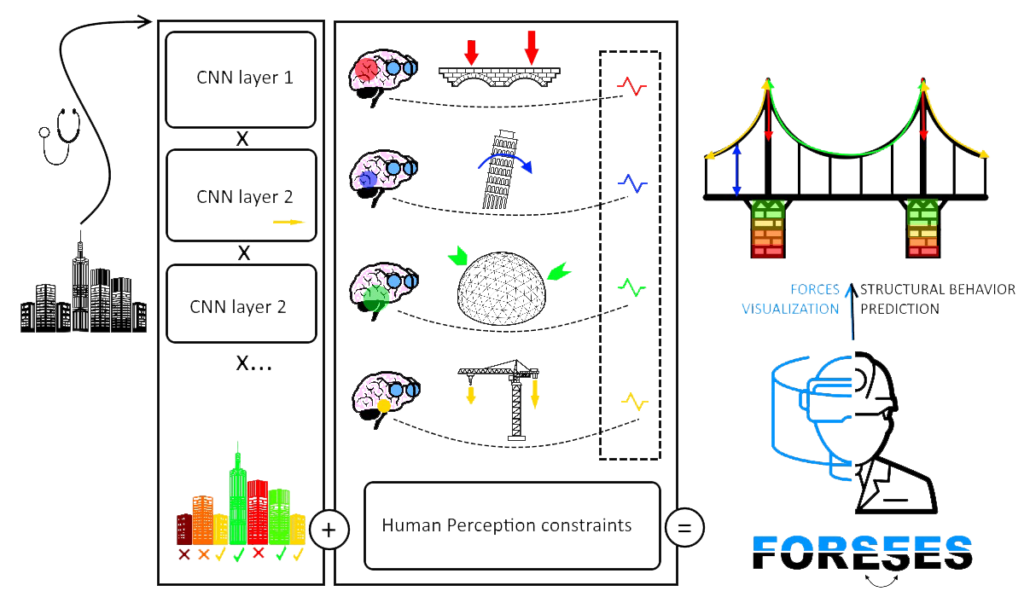Objectives and Project Description
The project started by merging the state of the art on visual analyses in structural applications in a CV framework and then expanded it to a Neuroscience approach. For example, Rapid Visual Screening (RSV) is a methodology widely used in engineering for seismic vulnerability assessment of the building stock that requires squadron of engineers deployed into an area to fill a survey with building features relevant for earthquake behavior. In collaboration with Senseable City Lab (SCL), we were able to replicate RSV results and exploit the power of CV analyses, using street level imagery (i.e. Google Street View) to assess seismic vulnerability of different world. We were also able to identify what features trained engineers and general public find more relevant for safety perception. We named this module Vulneracities.

For a deeper analyses in fundamentals of structural mechanics, we investigated the possibility to reconcile methods like photoelasticity or graphic statics with CV methods and cognition. We researched the analogy with the Free Energy Principle (FEP), that defines the cognitive set of mind+brain as an inference engine, since it can be modeled through a variational equation formally identical to that of the elastic potential of solids. By limiting the equation to the visual sense only, we aimed to formalize an equivalence between the terms of entropy, divergence, surprise, energy and similarity to the FEP terms. To validate this, problems known to SE have been used to reconstruct and identify forces fluxes, altogether with strain and stresses identification.
Vulneracities
[uptadtes are coming soon!]
Structure solving
[updates are coming soon!]